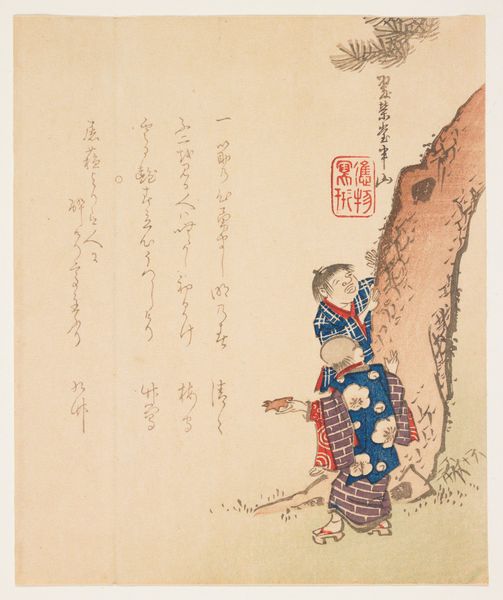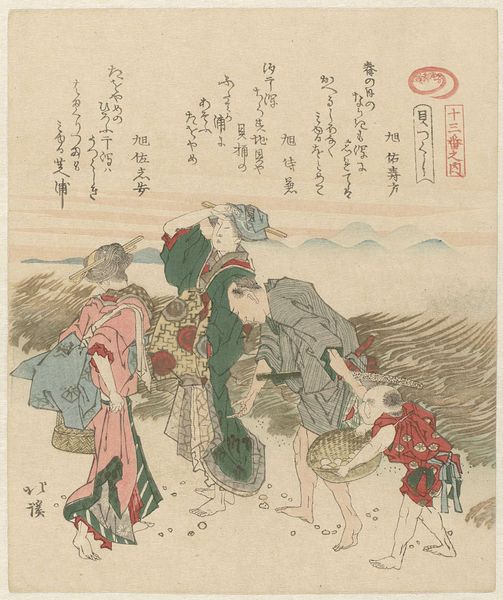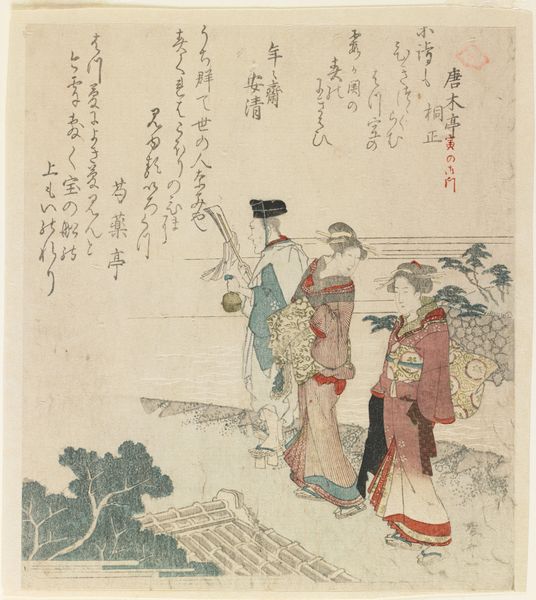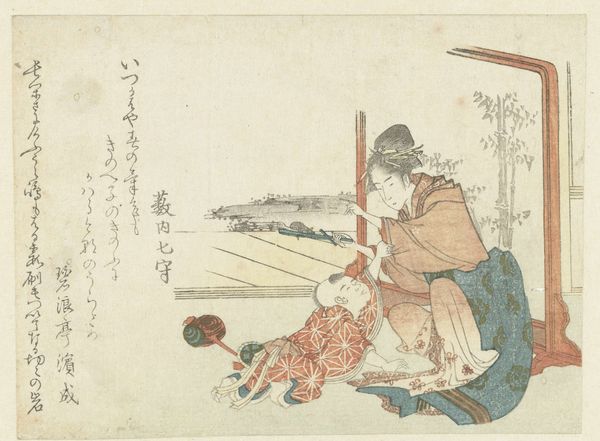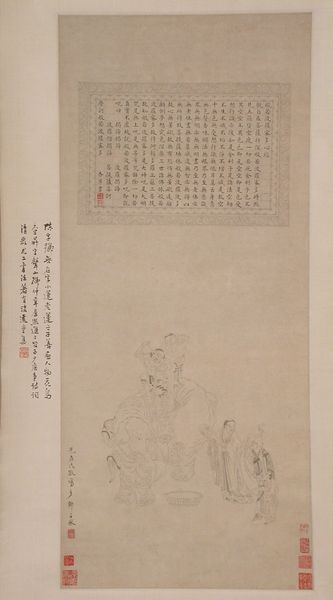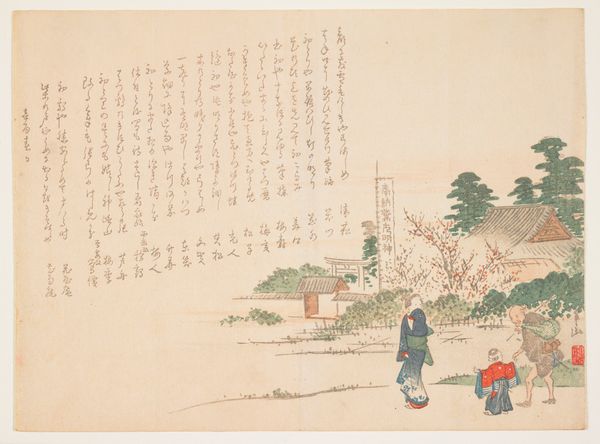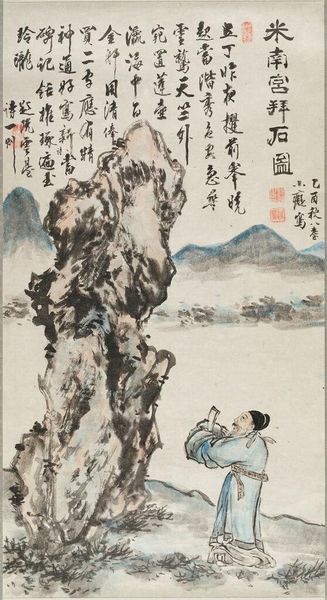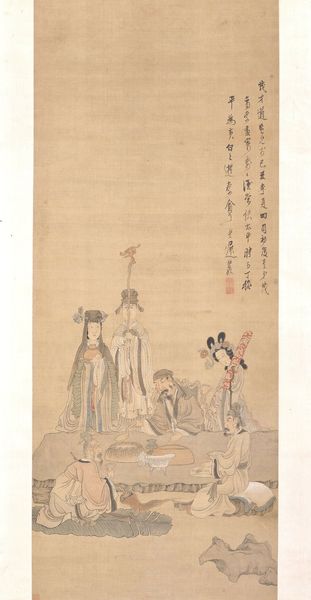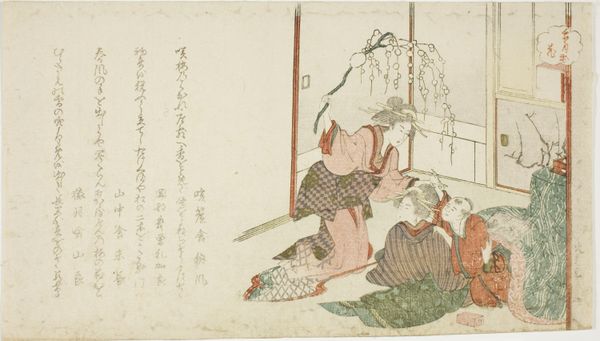
painting, paper, hanging-scroll, ink, color-on-paper
#
portrait
#
painting
#
asian-art
#
landscape
#
paper
#
hanging-scroll
#
ink
#
color-on-paper
#
ink drawing experimentation
#
china
Dimensions: 30 5/8 × 16 7/16 in. (77.79 × 41.75 cm) (image)78 3/8 × 24 7/16 in. (199.07 × 62.07 cm) (overall, without roller)
Copyright: Public Domain
Editor: Here we have Yu Zhiding's "Portrait of Zhu Yizun," painted with ink and color on paper, likely from the late 17th to early 18th century. The hanging scroll depicts a man seated in a landscape, and there's a feeling of scholarly retreat here that I find really calming. What symbolic significance might be embedded within this composition? Curator: Notice how the landscape isn’t just background, but seems integral to the sitter’s identity. How does the artist use specific details – the rocky outcrop, the young attendant – to portray Zhu Yizun’s cultural and intellectual standing? Are these merely decorative elements, or might they point to particular virtues or ideals? Editor: I see what you mean. The landscape almost seems to be in conversation with the man. The attendant with the staff seems a bit out of place, but now that you point out his importance to the overall symbolism, I wonder about his deeper symbolic relationship to the figure in the painting. Is there some aspect of Daoist cultivation being expressed? Curator: Precisely. The staff carried by the boy, the gnarled pine, each becomes a symbol, adding layers of meaning beyond mere representation. Consider too the calligraphy; does that lend itself to our developing understanding? Editor: Yes, it does. Seeing this as a constructed arrangement of cultural symbols adds depth. The symbols almost function as cultural anchors. Curator: Indeed, we start to understand it as an invocation of memory, of continuity with past traditions of scholarship and recluse culture. Understanding visual symbols allows us insight into historical understandings of virtue and belonging. Editor: That really shifts how I see it; it is no longer a snapshot, but an accumulation of meanings over time. Thank you! Curator: My pleasure! Consider now, how this artwork creates meaning for future generations.
Comments
minneapolisinstituteofart almost 2 years ago
⋮
Yu Zhiding, the painter of this intriguing portrait, was born in Yangzhou, Jiangsu province, and became widely known as the pre-eminent portraitist of his day. Yu imbued each of his portraits of eminent officials, scholars, poets, and artists with realistic faces, while also including subtle and oblique allusions that place them effectively within the larger social, economic, and cultural context. In this painting, Yu painted Zhu Yizun (1629-1709), a renowned scholar, official, poet, and bibliophile. The sitter, siting in a landscaped garden, looks out at us directly, with a confident, self-contained air, alerting us to his high status. Some influence from the Western approach to painting is visible in the use of shadow and color to model the face of the subject. The painting is also a perfect example of the convergence of Chinese artistic expression in bringing together the painted image, poetry and calligraphy by several renowned personages of the 17th-18th centuries.
Join the conversation
Join millions of artists and users on Artera today and experience the ultimate creative platform.


